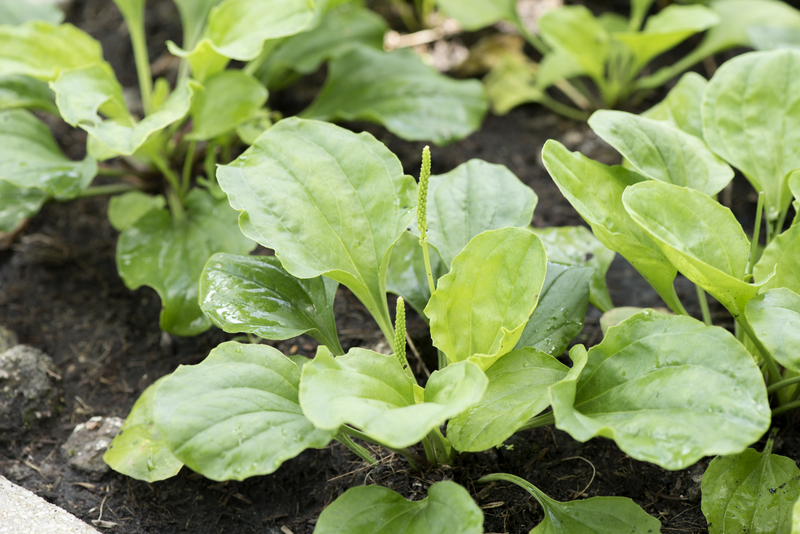Creating Your Dream Lawn: Easy Steps and Hidden Secrets for Beginners
Are you dreaming of a lush, green lawn that will be the envy of your neighborhood? Whether you're starting from scratch or giving an existing yard a makeover, creating your dream lawn might seem overwhelming at first. The good news is that with the right knowledge, tools, and a little patience, anyone can achieve a thriving, beautiful landscape. This comprehensive guide shares practical steps, key strategies, and lesser-known secrets for beginners seeking to design and maintain a standout lawn.
Why a Healthy Lawn Matters
A vibrant lawn does more than add visual appeal--it boosts your home's value, provides a safe play area, and even improves air quality. Investing energy into creating a dream yard yields long-lasting rewards, making your outdoor space a haven for relaxation and entertainment.
- Enhanced curb appeal: A beautiful lawn makes your home more attractive.
- Environmental benefits: Lawns trap dust, provide oxygen, and cool the air.
- Family-friendly: Soft, green grass creates a perfect spot for recreation.
- Increased property value: Well-manicured lawns catch buyers' eyes instantly.

Step 1: Assess Your Lawn and Set Clear Goals
Before you break ground, take time to plan. Every great lawn project begins with a little research and clear goals for your dream lawn.
Analyze Your Yard Environment
- Sun vs. Shade: Observe which areas get the most light. Some grasses prefer sun, others thrive in shade.
- Soil Type: Sandy, clay, silt, or loam? Test your soil for its composition and pH level.
- Drainage: Note if water pools in certain spots after rain.
- Traffic Patterns: Are kids or pets often on the lawn? Choose resilient grass varieties.
Define Your Dream Lawn's Purpose
Is your ideal lawn thick and green for curb appeal, playtime, gardening, or outdoor entertaining? Setting specific intentions will help you choose the right grass and landscaping features.
Step 2: Choose the Best Grass for Your Region
Selecting the right grass species is critical--the wrong type could mean constant struggle and disappointment.
Cool-Season vs. Warm-Season Grasses
- Cool-Season Grasses: Thrive in northern areas. Examples: Kentucky bluegrass, fescue, ryegrass.
- Warm-Season Grasses: Best for southern climates. Examples: Bermuda, Zoysia, St. Augustine.
Research grass varieties that match your region's climate, as well as sun/shade requirements, drought resistance, and maintenance needs. If in doubt, ask your local garden center for tailored advice.
Step 3: Prepare Your Lawn for Planting
Meticulous preparation yields long-term lawn success. Here's how to get your soil and site ready for planting:
Remove Weeds and Debris
- Pull out weeds, roots, rocks, and old grass.
- Use a flat shovel or sod cutter for large areas.
- Apply a safe, targeted weed killer if needed.
Test and Amend Your Soil
- Test for pH and nutrients: Your local extension office offers affordable soil testing kits.
- Add organic matter: Mix in compost or well-rotted manure to enhance fertility.
- Level the site: Use a rake to smooth bumps and fill low areas for even drainage.
Step 4: Planting Your Dream Lawn
There are several ways to establish new grass: seeding, sodding, or planting plugs. Each has pros and cons, so consider what's most practical for your budget and schedule.
Seeding
- Most affordable and offers many grass variety choices.
- Best planted in early fall or spring (for cool-season) or late spring (for warm-season lawns).
- Spread seed evenly, cover lightly with soil, and water thoroughly.
Sodding
- Instant results--green carpet in a day!
- More expensive but less prone to weeds at the start.
- Requires frequent watering until roots establish.
Planting Plugs or Sprigs
- Ideal for certain warm-season grasses.
- Takes longer to fill in but uses less material than sod.
Step 5: Essential Watering Techniques for a Healthy Lawn
Water is the lifeblood of your dream grass lawn. Smart watering routines help roots grow deep and strong.
- Water early in the morning to reduce evaporation.
- Soak the soil 6-8 inches deep per session--about 1-1.5 inches of water per week.
- Avoid frequent shallow watering that encourages weak roots.
- Use a rain gauge to track how much water your lawn is getting.
*Hidden Secret: For new lawns, keep the soil consistently moist (not soggy) until your grass reaches mowing height. Then transition to deep, infrequent watering.
Step 6: Mowing Like a Pro
Regular, proper mowing is one of the most critical lawn care secrets. Here's how to encourage thick, healthy grass:
- Never cut more than 1/3 of the grass height at once.
- Sharp mower blades reduce tearing and disease.
- Change mowing patterns to prevent turf stress and ruts.
- Leave grass clippings as mulch to return nutrients to the soil (unless disease is present).
*Hidden Secret: For a truly lush appearance, mow often enough that clippings are short and easily break down. This feeds your lawn naturally.
Step 7: Fertilization--Feed Your Dream Lawn the Right Way
Just like people, lawns need nutrition to thrive. The right fertilizer program gives your grass the boost it needs.
- Use a slow-release fertilizer for steady feeding.
- Apply according to season: Cool-season grasses in fall and spring; warm-season in late spring and summer.
- Follow label instructions--over-fertilizing can burn your lawn.
*Pro Tip: Consider organic options, such as compost or natural meal-based fertilizers, to enrich soil health and support beneficial microbes.
Step 8: Aeration and Overseeding--The Secret to Thicker, Healthier Turf
After a season or two, most lawns benefit from a little extra TLC. Aerating and overseeding helps repair thin or compacted areas and keeps your turf lush.
- Aerate soil in early fall (for cool-season grass) or spring (warm-season) to open up root pathways.
- Spread fresh seed over existing grass to fill in gaps.
- Topdress with a thin layer of compost for extra nutrients and moisture retention.
*Hidden Secret: Overseeding with blended grass varieties boosts resilience against pests, drought, and disease--a secret of professional landscapers!
Step 9: Weed and Pest Control for Beginners
Weeds, bugs, and diseases can undo your hard work--but effective, eco-friendly strategies keep them at bay.
- Healthy grass crowds out weeds naturally.
- Hand-pull or spot-treat weeds instead of blanket sprays.
- Encourage beneficial insects (like ladybugs) to control pests organically.
- Use mulch and ground cover plants around borders for extra weed prevention.
*Hidden Secret: A regular mowing and watering routine is your strongest defense. Stressed lawns attract pests and weeds!
Step 10: Lawn Maintenance--Your Calendar for Success
To maintain your dream lawn, set up a simple monthly calendar with key tasks. Consistency is the real secret to an envy-worthy yard!
- Spring: Rake debris, fertilize, seed, and repair bare spots.
- Summer: Mow at a taller height, water deeply, watch for heat stress.
- Fall: Fertilize, aerate, overseed, and remove leaves.
- Winter: Minimize traffic, prepare tools, and plan ahead for the next year.

Bonus Lawn Care Secrets from the Pros
- Soil health is key: Organic matter and microbe-rich compost create resilient grass roots.
- Don't cut grass too short! Taller grass shades the soil, saving water and reducing weeds.
- Rotate fertilizers and seed blends for balanced nutrition and pest resistance.
- Harness rainwater: Install rain barrels and water at the roots, not the leaves.
- Avoid overwatering: Too much moisture invites disease and creates a shallow root system.
Conclusion: Your Dream Lawn Awaits
Creating your dream lawn is a journey, not a sprint. Start with small steps, learn what works best in your yard, and don't be afraid to experiment. With these easy steps and hidden secrets for beginners, you'll be well on your way to a thriving, low-maintenance paradise that you and your family will enjoy for years to come. Remember, every great lawn began with one seed and one vision--let yours become the next showpiece on the block!
Want tailored tips for your yard? Share your lawn dreams in the comments below! Happy gardening!